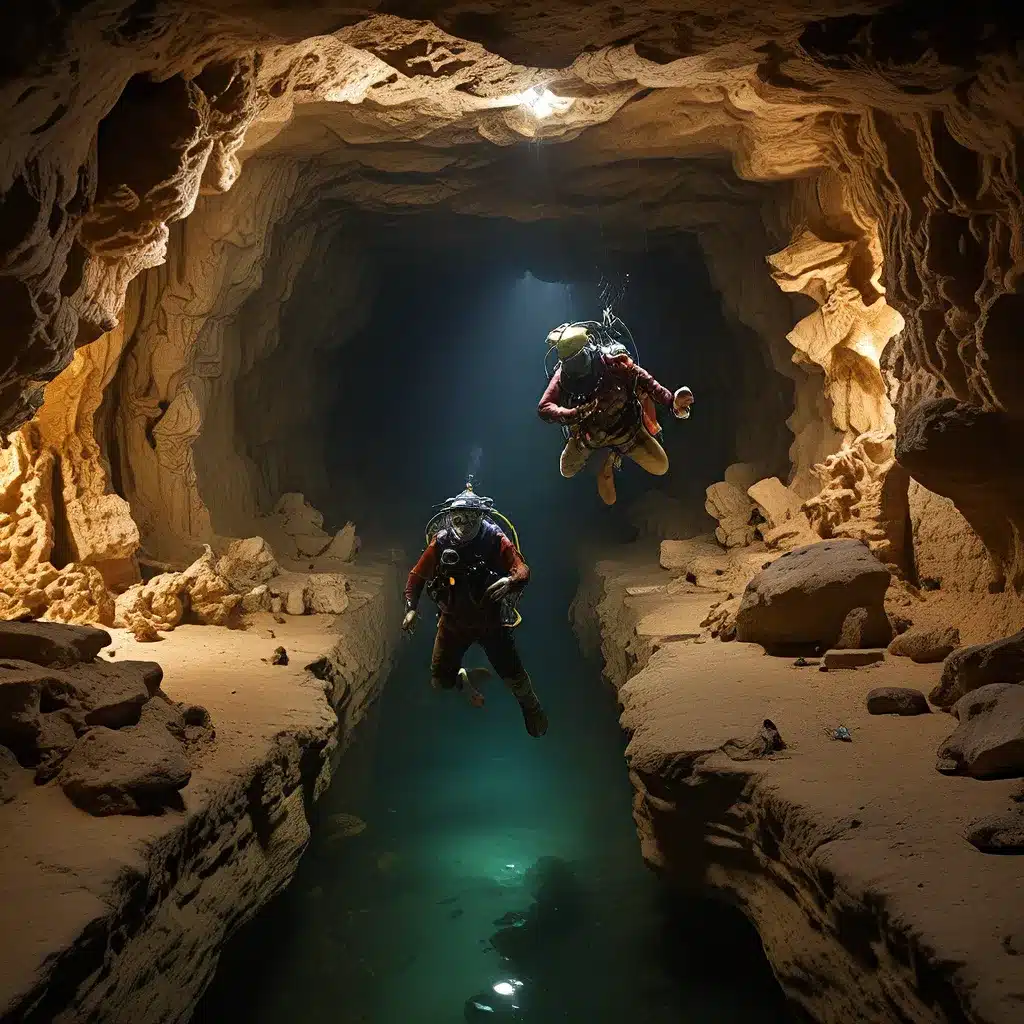
Unlocking the Secrets of the Hidden World Beneath Our Feet
The earth’s surface is just the tip of the iceberg when it comes to the wonders of our planet. Beneath the familiar landscapes and cityscapes lie vast, unexplored realms teeming with ancient mysteries and captivating discoveries. From the intricate cave systems harboring otherworldly creatures to the hidden ruins of lost civilizations, the subterranean world holds the keys to understanding our shared human heritage.
Unveiling the Wonders of the Subterranean Realm
As archaeologists delve deeper into the earth, they uncover a wealth of insights that have the power to revolutionize our understanding of the past. Innovative technologies like ground-penetrating radar (GPR) and side-scan sonar have transformed the field, allowing researchers to peer beneath the surface without physically disturbing sensitive sites. These cutting-edge tools have shed light on long-forgotten settlements, uncovering the ingenious engineering and resilience of our ancestors.
One remarkable example is the discovery of the extensive subterranean cities carved into the soft volcanic rock of Cappadocia, Turkey. These intricate labyrinths, some dating back to the Byzantine era, provided shelter and sustenance for thousands of people over centuries, showcasing the extraordinary adaptability and resourcefulness of our forebears.
Similarly, the ancient Roman aqueducts uncovered in Rome stand as testament to the engineering prowess of a civilization that continues to captivate our imaginations. These elaborate water-delivery systems, constructed as early as 312 BC, not only supplied water for public baths and fountains but also played a crucial role in firefighting and drinking water distribution, highlighting the Romans’ innovative approach to urban planning and infrastructure.
Unveiling the Secrets of Subterranean Ecosystems
But the subterranean world holds more than just the remnants of ancient civilizations. Deep beneath the Earth’s surface, a complex web of interconnected ecosystems thrives, where life has adapted in extraordinary ways to the unique challenges of living in complete darkness.
Eyeless cave fish that navigate through echolocation, translucent cave-dwelling insects, and bioluminescent aquatic species are just a few examples of the remarkable adaptations that have evolved in these subterranean habitats. These organisms offer a glimpse into the remarkable resilience and diversity of life, challenging our preconceptions about the limits of survival.
Moreover, the intricate relationships between the burrowing animals, mycorrhizal fungi, and the plant life that shape these underground ecosystems have profound implications for our understanding of how species interact and depend on one another. By studying these symbiotic connections, researchers can gain invaluable insights into the complex web of interdependence that underpins the natural world.
Exploring the Depths of the Oceans
The subterranean realm is not limited to the earth’s crust, however. Delving into the depths of the oceans, we uncover a realm even more alien and captivating than the caves and tunnels beneath our feet. Hydrothermal vents on the ocean floor, spewing out superheated water, create an environment where strange and extraordinary life forms thrive, from giant tube worms to blind shrimp navigating the darkness by sensing changes in pressure.
Advances in underwater technology, such as autonomous vehicles and sophisticated imaging systems, have allowed researchers to explore these abyssal depths like never before, uncovering new secrets and insights into the fragile ecosystems that exist at the very bottom of the ocean. Missions such as NASA’s Europa Clipper aim to apply these lessons to the search for potential extraterrestrial life, as scientists investigate the possibility of liquid water and habitable conditions on distant moons.
Searching for Extraterrestrial Secrets
Indeed, the subterranean realm’s capacity for holding secrets extends beyond our own planet. As our exploration of the cosmos deepens, the possibility of discovering life in subterranean environments on other celestial bodies has become an increasingly tantalizing prospect. The discovery of liquid water beneath Europa’s icy surface, one of Jupiter’s moons, has reignited the search for extraterrestrial life, offering the potential for hitherto unknown species to thrive in these hostile environments.
Just as advanced technologies have transformed our understanding of ancient civilizations on Earth, so too do researchers hope that new innovations will help uncover the secrets of the cosmos, potentially unlocking the mysteries of life beyond our own planet.
Unlocking the Potential of the Subterranean Realm
As we continue to explore the hidden depths of our planet and beyond, the subterranean realm holds the promise of even more remarkable discoveries. From the intricate ecosystems that thrive in complete darkness to the lost ruins of bygone civilizations, this mysterious world beneath our feet offers a wealth of insights that can profoundly shape our understanding of our shared human heritage and the very nature of life itself.
By embracing the latest technologies and techniques, archaeologists and scientists alike are poised to uncover the secrets that have long remained hidden from view, shedding light on the extraordinary adaptations and resilience of life in the most inhospitable environments. The potential of the subterranean realm is boundless, and the quest to unlock its mysteries is one of the most captivating and important endeavors of our time.
So, let us dive deeper into this enchanting world, uncovering the hidden wonders that lie beneath the surface and, in doing so, expanding the frontiers of human knowledge and understanding. The subterranean realms hold the keys to unlocking the past, present, and perhaps even the future of life on our planet and beyond.


